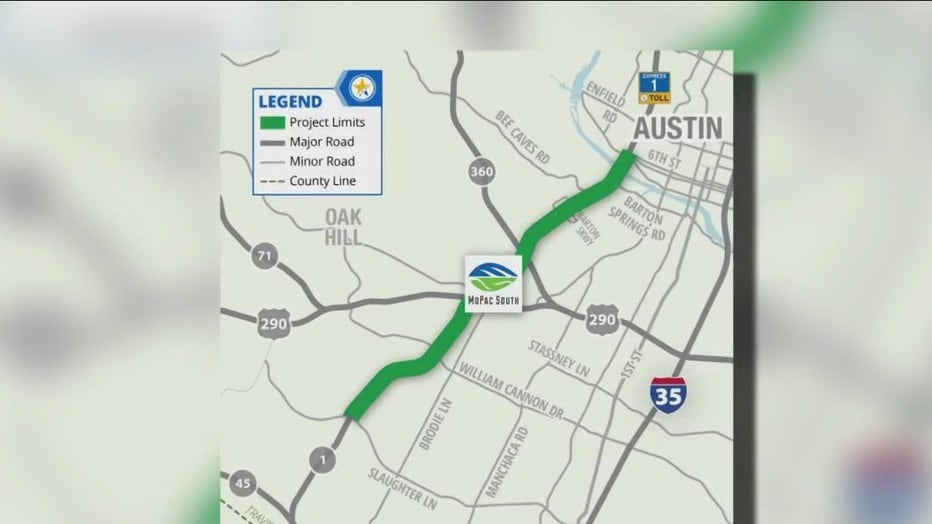CTRMA provides update on MoPac South Expansion project
AUSTIN, Texas - The Travis County Commissioners Court received an update from the Central Texas Regional Mobility Authority about the MoPac South Expansion project.
The project would cover about eight miles and proposed adding express lanes in both directions, from Cesar Chavez to Slaughter.
"Right now, it's congestion, but I come from Los Angeles, so I grew up with congestion. It's not as bad as LA, but it's getting close, it seems like it's getting a little worse as time goes on," said driver Steve Babyak.
"It's a lot of traffic," said driver Camila Rodriguez.
According to CTRMA, if nothing is done, drivers could spend another 35 minutes driving along the corridor by 2035.
The project is in the environment study phase, and different configurations are part of the study.
"We are also members of this community. As a regional agency our leadership and our staff live here, we drive the same roads, we bike the same trails, we swim in the same waters, and we drink the same water. It's why our public engagement is and will be focused on group thinking, the best way to protect and preserve these resources while balancing the need for improved infrastructure," James Bass, executive director of CTRMA, said in the work session.
"I really want us to try to get to the point where we can all say with confidence, we have done absolutely everything we can to protect the environment, protect our water quality, protect our groundwater and our springs," Brigid Shea, who represents precinct 2, said.

The MoPac South Expansion project would cover about eight miles and proposed adding express lanes in both directions, from Cesar Chavez to Slaughter.
RELATED COVERAGE
- Construction on W. William Cannon Drive in South Austin prompts traffic changes
- RM 2243 improvement project virtual meeting set for May 25
- Bill would allow temporary change in speed limits due to construction, weather on Texas highways
Austinites can expect more opportunities for public comment in the future. Those in charge and drivers alike say there needs to be balance between infrastructure and the environment.
"I think you have to expand it, look at the growth that we're having, it just makes sense," Babyak said.
"For every solution there's always going to be an up and down to it, like for sure it might make traffic go by easier... at the same time it adds a lot of pollution," Rodriguez said.
CTRMA says the next steps include more follow-up meetings.
For more information, click here.

